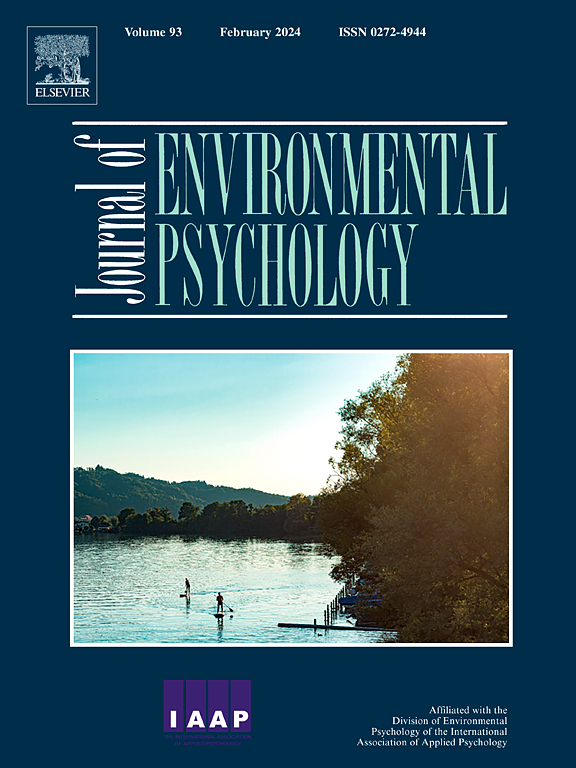Characteristics of physical environments that enhance learning: A systematic review of EEG-Based empirical studies
IF 6.1
1区 心理学
Q1 ENVIRONMENTAL STUDIES
引用次数: 0
Abstract
Physical environments can influence human emotion, cognition, and behavior including learning. Despite the importance of the physical environment in learning, neurophysiological evidence has not been extensively sought. The purpose of this study was, through an analysis of empirical studies in which electroencephalograms (EEGs) were used, to identify (a) the characteristics of physical environments that enhance learning, (b) the main brainwave indicators and brain regions associated with the learning process, and (c) the characteristics of EEG research design and materials. The Preferred Reporting Items for Systematic reviews and Meta-Analyses, or PRISMA, method and snowball sampling were used to select the 22 research articles analyzed in this study. The main findings from the selected literature include the following. First, color, lighting, and thermal comfort were the most commonly studied elements of physical environments that affect learning in EEG studies; attention, restoration, and creativity were the main cognitive‒psychological aspects investigated. Second, the main EEG brainwave indicators for attention were beta waves and those of restoration were alpha waves, relative alpha to beta, and the asymmetry indicator of alpha. The main brain regions associated with learning were the frontal, prefrontal, and occipital lobes. Third, regarding research design and materials, the systematic review revealed some gaps and limitations in previous studies, making research reproducibility difficult and necessitating the development of a standard research protocol and report of trustworthiness. The results of this study provide meaningful insights for the evaluation and planning of learning environments and future agendas for researchers in the field of environmental psychology.
求助全文
约1分钟内获得全文
求助全文
来源期刊

Journal of Environmental Psychology
Multiple-
CiteScore
10.60
自引率
8.70%
发文量
140
审稿时长
62 days
期刊介绍:
The Journal of Environmental Psychology is the premier journal in the field, serving individuals in a wide range of disciplines who have an interest in the scientific study of the transactions and interrelationships between people and their surroundings (including built, social, natural and virtual environments, the use and abuse of nature and natural resources, and sustainability-related behavior). The journal publishes internationally contributed empirical studies and reviews of research on these topics that advance new insights. As an important forum for the field, the journal publishes some of the most influential papers in the discipline that reflect the scientific development of environmental psychology. Contributions on theoretical, methodological, and practical aspects of all human-environment interactions are welcome, along with innovative or interdisciplinary approaches that have a psychological emphasis. Research areas include: •Psychological and behavioral aspects of people and nature •Cognitive mapping, spatial cognition and wayfinding •Ecological consequences of human actions •Theories of place, place attachment, and place identity •Environmental risks and hazards: perception, behavior, and management •Perception and evaluation of buildings and natural landscapes •Effects of physical and natural settings on human cognition and health •Theories of proenvironmental behavior, norms, attitudes, and personality •Psychology of sustainability and climate change •Psychological aspects of resource management and crises •Social use of space: crowding, privacy, territoriality, personal space •Design of, and experiences related to, the physical aspects of workplaces, schools, residences, public buildings and public space
 求助内容:
求助内容: 应助结果提醒方式:
应助结果提醒方式:


